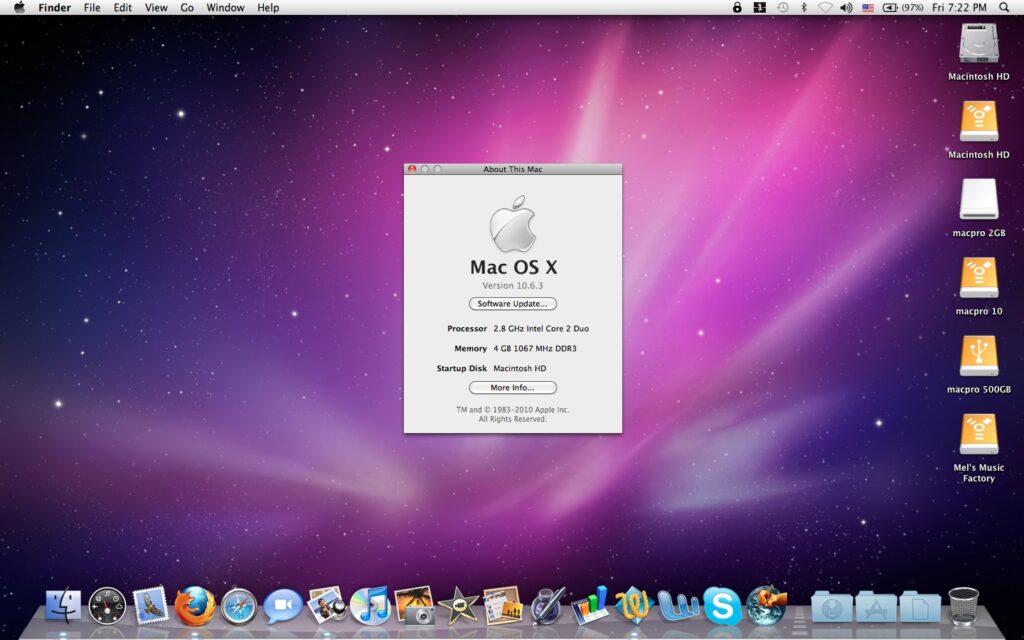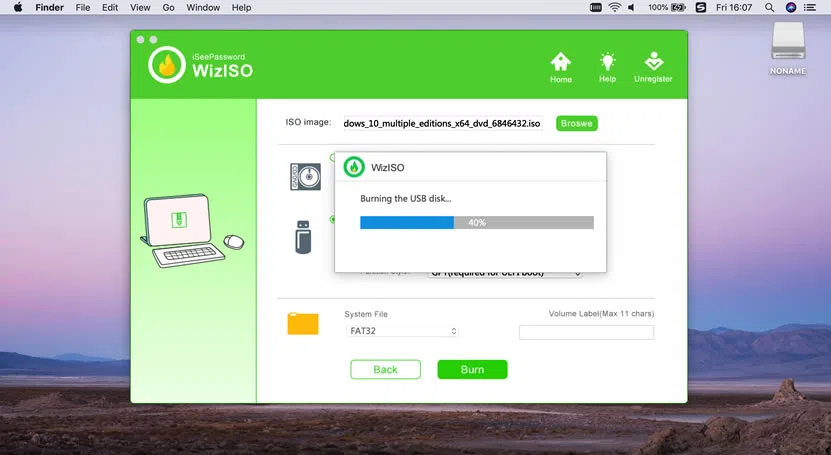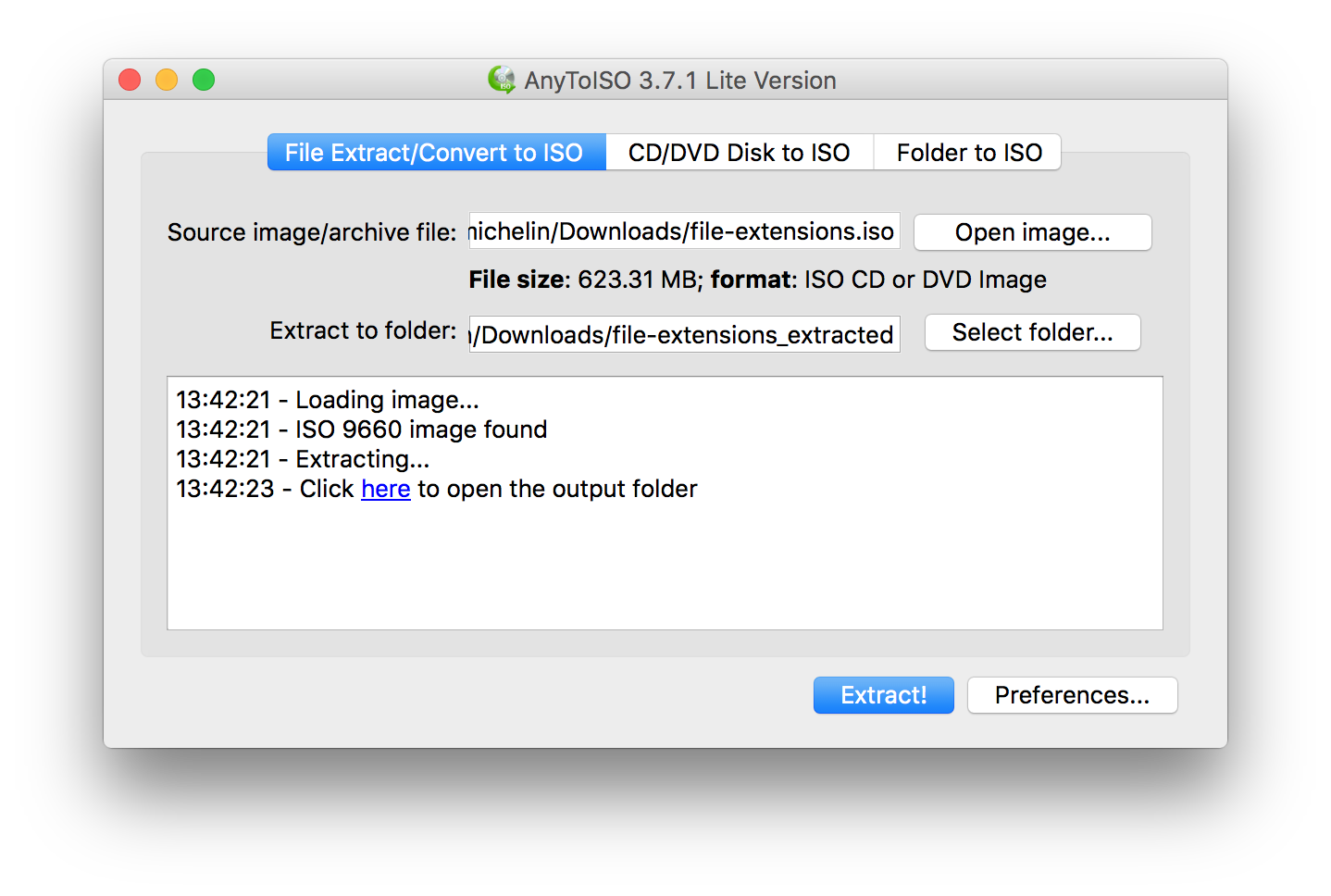Apple announced the release of macOS 10.14 Beta 1. One of the outstanding features of macOS Mojave is the Night Mode (Dark Mode) feature. This version also outperforms the macOS High Sierra 10.13.5.
Jun 05, 2015 How to Copy an ISO File to a Target Drive Using ‘dd’ in Mac OS X This will erase the target volume, replacing whatever data is on the destination drive with the ISO contents. There is no confirmation, therefore it is critical you use the proper drive identifier and proper syntax to avoid erasing the wrong thing. Mar 12, 2020 Select Install macOS (or Install OS X) from the Utilities window, then click Continue and follow the onscreen instructions. Learn more For more information about the createinstallmedia command and the arguments that you can use with it, make sure that the macOS installer is in your Applications folder, then enter this path in Terminal.
How to Get macOS Mojave ISO
Apple has now released a beta 1 version of Mojave for developers. One of Mojave’s innovations is the completely redesigned Mac App Store. The new App Store app provides users with easier use and access.
To learn more about Apple macOS Mojave innovations, visit this address.
Although Mac OS Mojave beta is released, many users have updated their systems. If you want to update your system to macOS 10.14, we recommend that you first back up your macOS computer for errors that may occur.
In this article, we have prepared the ISO file for installing the Mojave operating system using VMware Workstation, Oracle VM VirtualBox, VMware Fusion, or ESXi virtualization programs.

Once you have installed the macOS 10.14 installation image file on a virtual machine, you can start the installation immediately. If you want to download and install macOS Beta on your iMac or MacBook computer, you must have an Apple Developer account. After creating an Apple Developer account, you can download and install this update on your computer by downloading the macOS Developer Beta Access Utility.
In our previous articles, we have shared with you the macOS High Sierra operating system ISO files. If you want to install macOS 10.13.5, check out our macOS High Sierra Installation article.
Download macOS Mojave Image File for VirtualBox, ESXi, and VMware
You can use this ISO file with virtualization programs such as VirtualBox, VMware Workstation. We have tested this ISO file, and it works fine. You will also get ISO Corrupted Error if you try to open it on the Windows operating system after downloading the installation image to your computer.


The macOS ISO file will not open on Windows! Just create a new virtual machine for macOS and add the ISO file to the virtual machine and then start the installation!
Click the button below to get macOS Mojave 10.14 ISO file to your computer.
Update (July 26, 2018): macOS High Sierra 10.13.6 Released!
Update (July 29, 2019)
Apple introduced macOS 10.14.6 for developers. If you have already installed macOS Mojave, open the Mac App Store and download and install this version from Updates.

Mac OS Mojave Installation with VMware
Mac Os X Iso Pc
To install macOS 10.14 on a virtual machine using VMware virtualization program, click on the image below to browse our article.

Mac OS Mojave Installation with VMware vSphere Hypervisor ESXi
After downloading the image file, click on the image below to download Mojave on VMware ESXi.
Final Word
In this article, we have prepared and shared the macOS 10.14 image file for you to use macOS on virtual machines. In our next posts, we will post articles about the macOS Mojave installation. Thanks for following us!
Related Articles
♦ VMware Unlocker
♦ How to Install VMware Fusion on macOS
♦ How to Install VMware Tools on macOS
♦ Download VMware Tools for macO
♦ How to Run Windows Apps on macOS
Looking for the best ISO to USB burner for Mac? It's possible, but ISO is not native file type in Mac OS X or macOS environment, so you need to use workaround methods or employ a third-party ISO burning utility for Mac to get this done. This article covers three ways to burn ISO to USB stick on a Mac computer, powered by macOS Mojave, High Serria and earier Mac OS X systems.
The first thing you need to know is that you can't use an ISO disk image file on a Mac, since Apple primarily uses the DMG format. However, if you merely want to burn it to a disk, that's definitely possible. The only thing you can't do is run an ISO file on an Apple computer. Let's look at the various ways to burn ISO to USB on a Mac machine.
Part 1: How to Burn ISO to USB With Mac Terminal Software
Terminal is Apple's command line equivalent of Command Prompt in Windows and Terminal in Linux. Using this command line utility, you can burn an ISO file to an external DVD or USB disk. If you did not t have any experience with text command, then this is not recommended because it is too risky to damage the local disk with wrong input. Terminal allows you to do several system-level operations, so don't input anything other than the commands specified in the process outline shown below:
Step 1: Click Terminal icon from the Dock. Or Go to the Applications folder on Mac and find the Terminal app in Utilities folder.
Step 2: Copy the ISO file in a convenient location so your command doesn't have to be too long. Saving it to desktop or downloads folder is usually a good idea. Make sure you remember the name of the ISO file because it will be used in the command.
Step 3: If your ISO file is in your Desktop, then run the following command (press Enter after typing the command): cd desktop
Step 4: Now run the following command (hit Enter after typing): hdiutil burn filename.iso
Step 5: Once you run the command, your ISO file will be burned to the USB drive in your default optical drive. If you haven't inserted a disk, you will be prompted to do so. There is no need to run the command again after inserting the USB.
Cons:
- Dangerous and not safe for beginners .
- Sharp learning curve.
- Bad support for USB 2.0 device.
- USB not bootable.
If you want to avoid any kind of command line work and if you're running one of the newer versions of macOS, then it's better to use a third-party software like the one described in Part 2 below.
Part 2: Easily Burn ISO to USB on Mac via UUByte Software (Bootable USB Creator)
Sofware being powered by a graphics user interface are always welcomed because of user friendly operation. So the second suggestion in here is UUByte ISO burner software called ISO Editor for Mac. It is popularly regarded as the best ISO burning software for Mac. It allows you to burn, extract, edit, copy and create ISO almost as if it was a native file format on Mac. The utility has been fully tested on a wide range of storage media brands as well as all versions of macOS and Mac OS X.
The biggest advantage is that you do not need any technical expertise whatsoever to use this software. It is highly intuitive, and in a matter of minutes you can burn your ISO to USB or DVD. More importantly, the USB is bootable in default. This flexibility makes it the most user-friendly Mac app for handling ISO disk images in a number of ways. The next section shows you how to easily and quickly burn any ISO file to a disk or drive to create bootable USB on your Mac.
Key Features of ISO Editor for Mac
Mac Os X Installer Download
- Designed by great UI.
- Powerful Burning options.
- Able to make bootable USB or DVD.
- Support the latest macOS Mojave and High Serria.
- Include other useful ISO tools such as edit, extract and create.
Step 1: Download UUByte ISO Burner for Mac
Download and install ISO Editor for Mac to your computer and launch the program. Click on the Burn module on the first page, which will take you to the ISO burning utility.
Step 2: Insert USB Drive on Mac and Import ISO Image
Insert a USB flash drive into your Mac. Select the ISO file to be burned to the media. If you want a different partition style or file system, make those changes on this page. If you don't know what they mean, leave them in default mode.
Step 3: Start Burning ISO to USB on Mac
Click Burn and the ISO file will be burned to USB drive in around 5 minutes. Please wait and be patient. Make sure the computer not going into sleep mode during the burning process.
UUByte ISO Editor for Mac boasts a 95% burn success rate, so no wasted disks or wasted time when you use this software. The software's reliability, flexibility and speed have made this the go-to Mac application for handling ISO disk image files.
Part 3: Disk Utility - The Default ISO to USB Buner (Solid for Old Macs)
Disk Utility is a built-in tool that comes with Mac OS X and macOS. Using this function, you can easily burn your ISO to a disk after mounting it. Disk Utility is primarily meant to view and repair hard drives and other drives, but also has added functionality. Follow the process below to get your ISO burned to a writable DVD or CD.
Step 1: Go to the Applications folder using Finder or by clicking the shortcut on the bottom right of your screen. From there, go into the Utilities folder and click on Disk Utility to launch the app.
Step 2: Open your ISO file and mount it as a virtual drive. This is done automatically when you click on File >Open Disk Image… in the top menu.
Step 3: When you see your ISO file in the left panel, that means it was mounted properly. You can now insert an USB and click on the Burn option to burn the target ISO file to the USB drive.
This method is only meant for OS X 10.10 and earlier versions. With Mac OS X 10.11 El Capitan, Apple removed the ability to burn ISO to a USB. If you have one of these higher versions, you can try the above methods.
Summary
To be honest, Burning ISO to USB was not challenging at all on Mac in the past. But the situation was changed since the release of macOS. Many apps was not supported or updated to Mojave or High Serria. So for the new Mac computer, UUByte ISO Editor is the best option out there in 2019.
